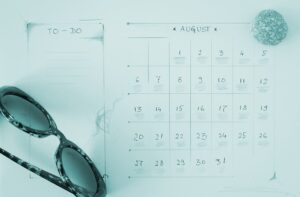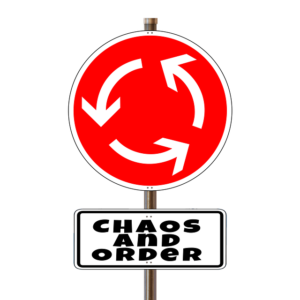by Jayme Radomski | Sep 10, 2019 | Office, Productivity
 We have researched tips and tricks on how to create and maintain an organized office to increase your productivity. An organized office includes a system to manage information and an environment that encourages productivity. You can create a comfortable and organized workspace to make your work time more productive and enjoyable. Here are some of our favorite tips.
We have researched tips and tricks on how to create and maintain an organized office to increase your productivity. An organized office includes a system to manage information and an environment that encourages productivity. You can create a comfortable and organized workspace to make your work time more productive and enjoyable. Here are some of our favorite tips.
Workspace
Your work environment is so important to your productivity. How the space feels to you and where items are located affect the quality of your workspace.
Lighting
Consider a well-lit workspace. If natural light is not an option, look for lighting that mimics that of natural light. Be generous on the quantity and location of light fixtures. Also consider the type of light bulbs you install. While fluorescent and LED light bulbs are more economical, those sensitive to this lighting may consider traditional incandescent lighting or warm colored LED bulbs.
Desk Location
Place your desk or work surface in an area that embraces productivity instead of distractions. You may not want to sit where passersby are tempted to stop to chat, or where noises are a distraction. If you have a home office, your most productive place is likely not in the kids’ playroom. Instead consider a room that is relatively far away from the family action.
Office Equipment
Have your work equipment in a location that is convenient, but not necessarily on your desktop. Equipment that is used frequently throughout the day should be placed near your workspace. Computer and phone are located on your desk. If you do a lot of video conferencing, your camera should be on your desk ready to go. If you do a lot of scanning, keep your scanner near your desk. Needing to run to another room or another floor to retrieve a print out will have an impact on your productivity. Other frequently used equipment should be placed on a separate piece of furniture nearby, or where it can be easily accessed.
Storage
If you are a visual person and tend to create piles on your desktop so that you know right where things are, consider open shelving for your files. If you feel most productive when things are tucked away out of site, then a file cabinet system will work well for you. Either system should be well-labeled so that everything has a place and retrieval of information is easy. Other office basics are important to your workspace, as well. These basics include a good sized trash can and recycle container, a supportive chair, right-sized desk or work surface, and containers to corral office supplies such as pens, pencils, tape, stapler, paperclips and notepads.
Information Management
Information management, traditionally referred to as paper management, is best completed by a structured system in place to receive, store and reference all the information that comes to you. A structured information management system works if your information is primarily in paper form, digital form or a combination. Similar management systems are set up to manage paper and digital information. Keep in mind that you want to have current projects and information accessible, while past projects and information can be filed away. This will free up space for what you are working on now, but you will still have past projects organized and accessible for future reference.
When you receive information, have an initial place for this information to go. There are five categories for this initial storage system. This system works for emails, physical papers and digital information. This initial storage system is designed to hold information for a few days to up to a month depending on the pace of your work.
- Follow Up
This file is where you place information that needs to be addressed in the near term. This file is addressed during a scheduled time you allocated to follow up on these items. You may need to allow for this time daily, weekly or even monthly. Sub files can be created based on the timeframe required for each action.
- To Do
This file is very similar to your to-do list. This is where you place items that have a deadline and cannot be overlooked. This may include membership renewals, client follow ups, etc. This file may also include emails and publications that you wish to unsubscribe from. This file may also be called “Waiting on Response,” if your workflow is dependent on others to respond or complete tasks.
- To Read
This file is where you place items that you intend to read and absorb at a later time. These items do not necessarily have a deadline, but instead are items of interest to you. This file is designed to prevent you from getting distracted by an interesting article when you are in the process of completing other tasks.
- To Pay
This is the file where you place items that have to be paid by a certain date. This can include vendor invoices, utility bills, credit card statements, etc. This file is kept separate from the to-do file since it involves money, and timely payment is important due to budgets and due dates.
- To File
A file designated to items that need to be filed is also important. This is where you place items that have been addressed, but eventually need to be filed for long-term storage. This includes physical files, digital files and emails.
- Long-term
A long-term file is where information that needs to be saved can be archived. When you receive an email or piece of mail that can go directly into longer term filing, set up a system that does this for you automatically. Emails can be automatically labeled and filed without any additional work on your part.
Be Consistent
Setting up a consistent filing system for the long-term files is very important. For example, if you have file folder on your hard drive or in the cloud for storing client invoices, you will likely have an email file for the same client. Naming these similar files in a consistent way will make retrieving information much more efficient. If you have an invoice from Top Shelf Home Organizing, you might consider creating a file titled “Top Shelf Home Organizing” on both your drive and your email. If you identify your clients with a contract number, consider utilizing the contract number in your file naming convention. The important point here is to keep the naming convention consistent across physical files, digital files and email files.
IF setting up and/or maintaining a productive office environment and structured filing system is overwhelming, consider having an office assistant or a professional organizer help you. See if Top Shelf Home Organizing can help you get your next organizing project started and completed. Contact Jayme to schedule a consult or chat about organizing.
by Jayme Radomski | Aug 1, 2019 | Money & Paper Management, Productivity
 Whether you are in high school or in college, having a system to organize your course work will set the foundation for success in your courses. Keeping an organized course portfolio for each class can help with homework, studying for exams, and reference for the next course in a sequence. In the long term, having organized work can assist with future courses, standardized test preparation and professional licensing. These portfolios can also serve as sample work for college applications, graduate school admissions, job applications and scholarship applications. A portfolio could be created with a simple three ring binder or electronically using PDF documents.
Whether you are in high school or in college, having a system to organize your course work will set the foundation for success in your courses. Keeping an organized course portfolio for each class can help with homework, studying for exams, and reference for the next course in a sequence. In the long term, having organized work can assist with future courses, standardized test preparation and professional licensing. These portfolios can also serve as sample work for college applications, graduate school admissions, job applications and scholarship applications. A portfolio could be created with a simple three ring binder or electronically using PDF documents.
Cover
The cover to a course portfolio should include:
- Course name
- Course number
- Course term and date
- Instructor name
- Your name
To save time, consider creating a template in a word processing document so that information for each course can be easily entered and saved.
Table of Contents
The basics of a Table of Contents is to assist you in finding the information that is included within the portfolio. At a minimum, this page will include the titles of each section of the portfolio. These sections are listed below in bold. If you want to add detail to the table of contents, a suggestion is to add subtitles to each section. The Lecture Notes section, for example, would include the topics of each lecture, and the Lab section would include the titles to each lab.
Lecture Notes
The lecture note section of the portfolio is where you gather and store the lesson information that is presented in the classroom. The material is placed chronologically in the portfolio. Lessons may be provided in a visual presentation software such as PowerPoint or Google Slides, PDF or another file. Some instructors may not provide lesson outlines or notes, as they may feel a student is more engaged and likely to retain material if they create their own notes.
The content of the Lecture Note section will include:
- Lesson outlines provided by instructor
- Your notes (these may be handwritten, markups on a PDF, notes added to a visual presentation file file, or notes added to other files the instructor provides)
Handouts
Supplemental handouts
The instructor may provide handout or additional files to supplement their lecture materials.
Reference material
The instructor may include reference material that they used to prepare their lecture, or material that the student can refer to for additional reinforcement.
Articles
- Current articles can be helpful to reinforce the lecture materials and add interest to the material being presented.
- Other materials provided by instructor
- Reference material
Assignments
Chronologically placed in portfolios
Cover page
Assignment name
Assignment number
Date submitted
Instructor name
Your name
Original assignment sheet
Graded assignment
Revised assignment
Exams
Chronologically placed in portfolio
Exam cover sheet with material, lectures and chapters covered
Labs
Chronologically placed in portfolio
Lab name
Lab number
Date performed
Date submitted
Instructor name
Your name
Lab team member names
Formal lab write-up
Lab instructions
Lab lecture notes
Handwritten notes and data collection
Photos of procedure and results
Resources referenced
Having organized files on your hard drive and on a network is equally important. Providing structure to the way the work is saved and titled helps students access their work when assignments are due, study for exams and reference work in the future.
- Make one main file devoted to your schoolwork. Title this folder with your school name. Add subfolders with the school year or term. For example, “Spring 2020.”
- Within the term file, create a subfolder for each class you take. (Tip: Use the full name of the class, i.e., “AE 1001 Freshman Seminar.” If that’s too long, use the department abbreviation and course number, i.e., “AE 1001.”)
- Each class will have similar subfolders to keep specific material. These folders will likely include Lecture Notes, Handouts, Assignments, Exams and Labs. The files within these files will have a clear and unique name starting with the category followed by the details of the file. For example, lecture notes from the sixth lecture may be titled “Lecture 6.” Your instructor may require a particular file-name structure that includes your name if the work is being submitted via e-mail or a cloud-based workspace such as Dropbox or Box. To ensure that your work will be accepted for full credit, pay attention to the guidelines provided in your syllabus, in class, or within the course.
- Save your final file to the appropriate course folder. You may consider saving to your own drive and backing up to the cloud, or an external drive to protect your work.
Keeping course work organized is a critical aspect of a student’s success. Guiding them through this process a few times will help them build structure for future success and independence. An organized course portfolio can serve as application and scholarship material, be used for reference for future courses and careers, as well as a reference for standard testing and professional licensing.
See if Top Shelf Home Organizing can help you get your next organizing project started and completed. Contact Jayme to schedule a consult or chat about organizing.
by Jayme Radomski | May 3, 2019 | Clutter, Productivity, Saving Time, Wardrobe
Preparing for a season transition can be stressful, especially if you have school aged children wrapping up their school year and end of year performances. While May is a busy month, I have created a list of things to do before summer is in full swing. The key to summer is to have a plan. 
- Budget
Summer days feel carefree and wide open. Your budget, however, may not be. Take some time to think about your summer budget. Summer time brings extra childcare and camp expenses. You may also be working a reduced schedule. Sticking to a budget can make your summer less stressful and more accomplished. No one wants to end the summer in debt and stressed out.
- Schedule
A change in schedule for the family will bring new challenges. Plan ahead for summer activities and childcare. For you, schedule time for self care and exercise. If you are good about getting to the gym during the school year, you will want to schedule similar exercise time in the summer. It’s easy to put other family member’s schedules before yours in the summer. Your local library and school are great resources for scheduling activities for your children.
- Travel
Its time to plan your travel routes and lodging for summer travel. Choose your destination, and schedule and research the best flights, routes and lodging. If you have your travel plans nailed down, its time to get into the details. Research the best local cuisine, fun day excursions, the best parks in the area, and free things to do with kids. It is also a good idea to gather all important travel documents, and know where the local medical clinics are and drug stores for necessities while traveling. For the weekends you are local, research your city’s summer bucket list for fun local explorations.
- Lazy Days
Plan plenty of lazy days for you and your family. Allow yourself some time to read a book, nap in the hammock or putts in the garden. Kids love exploring in the backyard, creating fairy gardens, collecting bugs and camping in the backyard. These creative activities are tough to accomplish with an overscheduled summer.
- Self Care
Do a few things for yourself in advance of summer time. Schedule a hair appointment for a fresh cut and color. Pay attention to your feet by starting the sandal season with a fresh pedicure. Stock up on sunscreen for both your body and your face. Declutter your makeup, toss the old items and add a fresh lip color to your collection. This is also a great time to clean out your medicine cabinet. Dispose of expired or unneeded medications, and ensure your first aid kit is stocked.
- Your Wardrobe
If you have not yet transitioned your wardrobe, do it now. Purge the fall, winter and spring items that don’t suit you, instead of packing them away. If you didn’t like them this year, you won’t like them next year (even if you lose the ten pounds you are working on). For your summer wardrobe, get all items from storage. Carefully select the items you want to wear, purge the rest. Make a list of items you need to complete your wardrobe and carefully purchase only those items.
- Kids Wardrobe
This purge is very similar to what you would do for your own wardrobe. The good news is that it is easier to work through someone else’s clothes than your own. Remove the fall, winter and spring items that are worn, stained and will not fit your children next year. If you are saving clothing for a younger child, only save the items that you truly love and are in good condition. There is no reason to handle stained or worn clothes more than one time. Neatly pack away the clothes you are saving. Make sure they are clean and neatly folded, and placed in clear plastic bins that are labeled so you know right where to find them. Make a list of the items your children need for the summer season, so you can once again shop with meaning. Keep in mind summer camp and extended trips when inventorying kids clothes.
- Purge Toys
With the kids spending more time outdoors, it is a great time to get into the playroom and basement, and purge the toys they don’t receive joy from. Consider the plastic toy sets they received for their birthday that are now missing parts and have broken pieces, the toys they scatter around unproductively, the nostalgic toy your mother-in-law picked up at a rummage sale last summer, and the toys they have simply outgrown. Keep the basic toys that allow for creative play such as Legos, Magna tiles, dolls and a few Nerf guns.
- House
Prepare your house for a fresh start to the summer. Taking care of a few things inside and out gives you a neat and clean feel for the summer. Inside the house a good deep clean and purge will free up some space. Clean the windows for a clear view, and clean the oven now that roasting season is over. Have your air conditioning system inspected and serviced. Moving to the outside, give your grill a good scrub down. You’ll be amazed how great a clean grill can feel. Wash down patio furniture and the cushions for meals on the porch. Tackle the weeds in the garden now while the soil is moist and soft, and weeds are small. Apply a pre-emergent to your gardens as well to prevent new weeds from appearing. Seed the areas of your lawn that are thin. Add some fresh annual flowers to the front flower beds for some curb appeal. Clean the walkway, driveway and garage floor. Prepare your lawn mower by servicing the engine and sharpening the blades. Inflate the bicycle tires and grease the chains for summer bike rides.
At Top Shelf Home Organizing, we love to help people get stuff done. See if Top Shelf Home Organizing can help you get ready for summer. Contact Jayme to schedule a consult or chat about organizing.
by Jayme Radomski | Jun 5, 2018 | Busyness, Productivity, Work & Home Office
 Productivity is all about being efficient and accomplishing more in less time. Schedule your day to be the most efficient you can be by having a plan for every day.
Productivity is all about being efficient and accomplishing more in less time. Schedule your day to be the most efficient you can be by having a plan for every day.
Here are a few tips to make the most of your day whether you work in your home, run a business, or work for a large company.
- Difficult Tasks
Schedule your most difficult, undesirable tasks for the time of day when you are most focused. For many, this time is first thing in the morning. And doesn’t if feel good to get it out of the way?
- Meetings
Prepare, review and stick to a meeting agenda to ensure everyone stays on topic. Issues that may come up during a meeting can wait to be discussed at a later time with only the people involved. Set up video conferencing equipment ahead of the meeting so you can tackle the agenda on time and save everyone valuable minutes with each meeting.
- Communication
Schedule a couple times in your day where you devote time to checking and responding to emails, voicemails and messages. Having a set time to do this will help you avoid being interrupted throughout the day, and keep you focused on the project you intend to accomplish. Also, use the phone to communicate more often versus the never ending back and forth of email and other messaging communications.
- Breaks
Schedule blocks of breaks throughout your day to keep your mind fresh.
- Me Time
Schedule me time every day. Taking time first thing in the morning to focus on your health and faith will get your day off to a good start.
- Checklists
Use a checklist for daily repetitive tasks. This will keep you focused and help minimize errors in the tasks you do everyday. Also, create a weekly checklist to help keep your week on task, so you can accomplish your goals. Create your weekly checklist at the end of the previous work week so your week is off to a strong, focused start.
- Work Space
Keep your work space neat and organized to ensure focus. Keep only the current project on your desk. If it makes sense, plan certain tasks to be completed offsite or at home. Offsite work allows for focus without the office interruptions and can save commute time.
If scheduling and organizing are challenging, a professional organizer can help. See if Top Shelf Home Organizing can help you on your journey. Contact Jayme to schedule a consult or chat about organizing.
by Jayme Radomski | Jan 17, 2018 | Clutter, Mindfulness, Nesting, Productivity
 Do you walk in the house after a long day at work and just sigh at your cluttered house? Have you planned to organize one morning but just did not know where to start or were just not in the mood?
Do you walk in the house after a long day at work and just sigh at your cluttered house? Have you planned to organize one morning but just did not know where to start or were just not in the mood?
Are you caught in a vicious cycle: as soon as you organize one room another one has turned to chaos? Maybe you just need to prioritize, find motivation, and ask for help. Easier said than done?
Here is how to get started:
Prioritize
As with most goals in life, you want to strive for progress and improvement, not perfection. Most of us do not have time to achieve perfection in everything we do and still live a happy, fulfilling life. When you set goals, make them achievable, attainable. When you make that progress, create a visual way to track it or remind yourself of all you have accomplished. Since we will never have more than 24 hours in a day, we may have to say “no” to some activities and tasks.
As you list each goal, task, or activity, ask yourself if it is necessary, if it supports your ultimate goals, or if any other activity or person will be negatively affected if it does not happen. You may see your list shrink before your very eyes. If you are not sure how to narrow your list, search the internet, ask a friend, or consult a professional organizer (we help with both the tangible and intangible).
Motivate
Do you start the day with the best of intentions to declutter the bathroom only to lose your drive because it is “just not worth it?” What is worth it to you? What do you value? Why? These questions may not seem to have much to do with organizing, but they can be the key to your motivation. How much time do you spend on activities that relate to your values? Most of us would probably answer “not enough.” Then why would you ever spend time on an activity not related to your values, such as organizing?
The answer: organizing allows you to focus more on your values. Organizing means less time searching for the other shoe, fewer arguments over who last used the scissors and did not put them back, less time cleaning around the clutter. With less time wasted, you have more time to be with family, exercise, eat healthy, and pursue those life goals that really matter. The next time you wonder why you would ever make time to organize, remember that organizing can be a means to an end. If you find a task that seems pointless, ask yourself how that task can bring you closer to what means the most to you. It is amazing how a change in attitude and knowing what is in it for you can motivate.
Ask for Help
Even if most of your chores and daily tasks are “value added”, they are not always fun and often too much for one person. Solution: spread the responsibility among the whole household. What is boring to one person may be fun for another. One person’s weak spot may be another person’s strength. Some people have time in the morning to help everyone get ready for the day, and others have more time at night to help everyone get ready for bed. When you do ask for help, just remember to be specific or be prepared for the help to be not exactly what you expected. Letting others pick what they want and find their own way, within reason, may even make them more willing and productive.
If organizing is overwhelming, a professional organizer can help. See if Top Shelf Home Organizing can help you on your journey. Contact Jayme to schedule a consult or chat about organizing.
 We have researched tips and tricks on how to create and maintain an organized office to increase your productivity. An organized office includes a system to manage information and an environment that encourages productivity. You can create a comfortable and organized workspace to make your work time more productive and enjoyable. Here are some of our favorite tips.
We have researched tips and tricks on how to create and maintain an organized office to increase your productivity. An organized office includes a system to manage information and an environment that encourages productivity. You can create a comfortable and organized workspace to make your work time more productive and enjoyable. Here are some of our favorite tips.



